Table of Contents
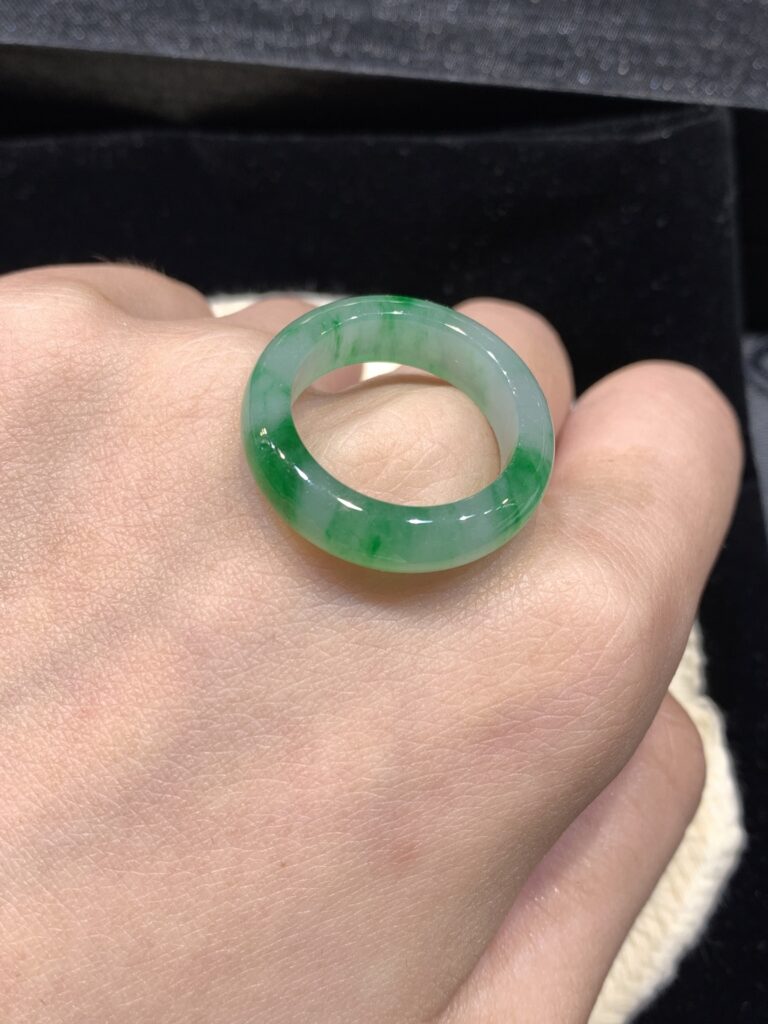
1. Introduction: The Enduring Appeal of the Jade Ring
The jade ring has captivated jewelry lovers and cultural enthusiasts for centuries. More than just a beautiful accessory, it represents a blend of elegance, tradition, and spiritual depth that transcends trends and generations. Whether it is a minimalist green band or an elaborately carved heirloom piece, a jade ring speaks to the wearer’s connection with nature, balance, and timeless style.
In today’s global jewelry market, the jade ring stands out not only for its unique color palette—ranging from rich emerald green to soft lavender hues—but also for its metaphysical appeal. Many believe that jade has protective and healing properties, making a jade ring a meaningful talisman in addition to being a fashion statement. This duality—beauty and symbolism—is what gives the jade ring its enduring charm.
From luxury boutiques to artisan markets, the demand for genuine jade rings has never waned. Whether worn for daily protection or as a cherished piece for special occasions, the jade ring continues to hold a special place in hearts and cultures around the world.
2. History and Cultural Significance of Jade Rings
The history of the jade ring is deeply rooted in ancient civilizations, particularly in East Asia. In China, jade has been revered for over 7,000 years, often called the “Stone of Heaven.” During the Neolithic period, jade was used not only for tools and weapons but also for ceremonial and religious purposes. By the time of the Han Dynasty, jade rings and ornaments had become symbols of nobility, morality, and spiritual protection.
In Chinese culture, jade represents the Confucian virtues of wisdom, justice, compassion, modesty, and courage. A jade ring worn on the finger is not just an accessory—it is a philosophical statement and a spiritual reminder. Emperors, scholars, and nobles believed that jade could purify the soul, repel evil spirits, and bring prosperity. That reverence continues today, as modern wearers seek both the aesthetic beauty and the ancient power associated with jade.
Beyond China, jade also holds cultural importance in other regions. The Māori of New Zealand use greenstone (a form of nephrite jade) to carve rings and pendants that are passed down through generations. In Central America, the Mayans considered jade more valuable than gold. These global traditions highlight the jade ring as a universal symbol of status, spirituality, and legacy.
Whether handed down as a family heirloom or gifted for a special occasion, a jade ring connects the present to the past. It carries the wisdom of ancestors and the craftsmanship of cultures that valued jade not only as a gemstone but as a living spiritual element.
3. Types of Jade Used in Rings: Jadeite vs. Nephrite
When choosing a jade ring, understanding the differences between the two primary types of jade—jadeite and nephrite—is essential. While both are cherished for their beauty and symbolic meaning, they differ in origin, structure, color range, and value.
Jadeite: The Rarer and More Valuable Jade
Jadeite is the rarer and more precious form of jade, primarily sourced from Myanmar (Burma). It is denser and harder than nephrite, with a more crystalline structure that allows it to take on vivid, saturated colors and a fine polish. High-quality jadeite jade rings often display brilliant emerald greens, translucent lavender, icy white, and even rare shades like red or yellow. Imperial jade—an intense green jadeite with high translucency—is considered the most valuable.
Because of its rarity and aesthetic appeal, jadeite jade rings are often used in fine jewelry and high-end collectibles. They are frequently chosen for engagement rings, heirloom pieces, or investment-grade purchases.
Nephrite: The Ancient and Durable Jade
Nephrite is more common and was used extensively in ancient China, as well as in indigenous art across New Zealand, Russia, and Canada. It has a fibrous structure, giving it a more waxy luster and softer look compared to jadeite. Nephrite jade rings usually appear in creamy whites, soft greens, browns, and grays.
While nephrite may not be as expensive as jadeite, it carries immense cultural and historical value. Many antique jade rings made of nephrite have been passed down for centuries and are treasured for their craftsmanship and spiritual symbolism.
Which Jade is Right for Your Ring?
Choosing between jadeite and nephrite depends on your budget, aesthetic preference, and intention. If you’re looking for brilliance, translucency, and status, a jadeite ring may be your best choice. If you prefer a more subtle, grounded beauty with deep cultural roots, nephrite offers timeless charm.
Regardless of the type, a genuine jade ring—whether jadeite or nephrite—can offer beauty, durability, and spiritual significance that lasts a lifetime.
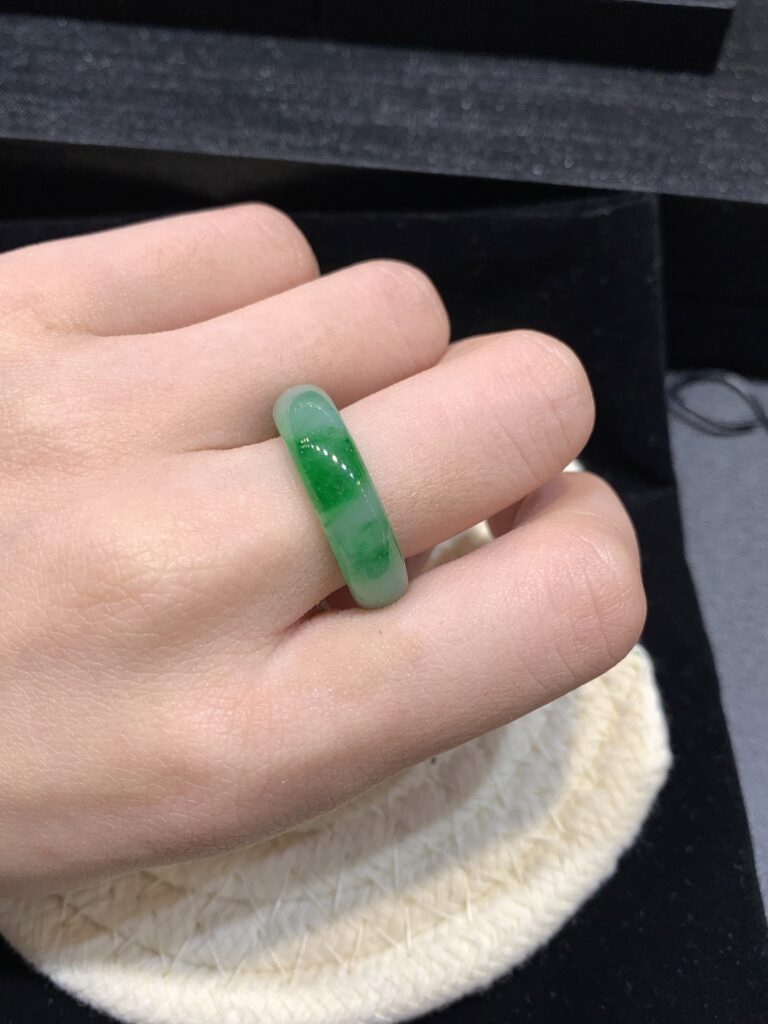
4. Popular Jade Ring Styles for Men and Women
Jade rings come in a wide variety of styles, catering to both men and women across cultures and fashion tastes. Whether minimalist or ornate, traditional or modern, the jade ring continues to evolve while maintaining its symbolic heart.
For Women: Grace and Spiritual Elegance
Women’s jade rings often highlight delicate craftsmanship and feminine grace. Popular styles include:
- Cabochon solitaire rings: A polished, domed jade stone set in gold or silver, emphasizing the natural beauty of the jade.
- Floral and nature motifs: Jade rings carved or framed with lotus flowers, butterflies, or vines, representing purity and rebirth.
- Stackable bands: Slim jade bands in soft hues, perfect for layering or mixing with metal rings for a chic, modern look.
- Lavender and icy jade rings: Favored for their soft color and high translucency, perfect for elegant occasions or everyday wear.
These styles are often paired with diamonds or other gems to enhance their brilliance and spiritual meaning.
For Men: Strength and Cultural Heritage
Men’s jade rings tend to be bolder and more symbolic. Popular masculine styles include:
- Signet rings: Carved jade pieces set into heavy metal bases, often engraved with Chinese characters, family crests, or protective symbols.
- Plain jade bands: Thick, simple rings made entirely of jade, symbolizing strength, loyalty, and discipline.
- Totem or dragon designs: Incorporating powerful imagery such as dragons or tigers to convey courage and authority.
- Black or dark green jadeite rings: Popular for their understated elegance and masculine energy.
Men often wear jade rings as a sign of protection or ancestral reverence, especially in cultures where jade plays a spiritual or philosophical role.
Unisex and Modern Interpretations
Contemporary designers are also creating gender-neutral jade ring styles, using mixed materials like titanium, wood, or rose gold to give the stone a fresh context. These modern pieces appeal to younger generations who seek both authenticity and originality.
No matter your gender or style, the jade ring remains a deeply personal item—chosen not only for its look but for its meaning, energy, and timeless appeal.
5. How to Choose a High-Quality Jade Ring
Selecting a high-quality jade ring requires more than just picking a pretty stone. True jade—especially jadeite—comes in a wide range of qualities, and knowing what to look for can help you avoid imitations and make a wise investment in beauty, longevity, and spiritual energy.
a. Type of Jade: Always Verify
First, determine whether the ring is made from jadeite or nephrite, as they differ in quality and value. Jadeite, particularly from Myanmar, is rarer and more sought-after for fine jade rings, while nephrite is more common and has a softer luster.
Make sure the stone has been certified by a reputable gemological laboratory, especially when purchasing online. Fake or treated jade (such as dyed or polymer-impregnated stones, known as B or C grade jade) may look appealing but lacks durability and long-term value.
b. Color: Purity and Evenness Matter
Color is one of the most important factors in evaluating a jade ring. Look for stones with vivid, even color and minimal spotting or cloudiness. In jadeite, the most prized color is imperial green—a rich, emerald hue with translucency and saturation. However, lavender, icy white, black, and honey-colored jade are also highly valued in different cultures and design contexts.
Avoid stones that appear overly bright, neon, or dyed. Natural jade’s colors tend to have a depth and softness that cannot be replicated.
c. Texture and Transparency
High-quality jade has a smooth, tightly packed crystalline structure that feels glassy or waxy to the touch. Translucency—known as “water” in jade—is a prized characteristic. The more translucent a jade ring, the more valuable and luminous it appears. Opaque stones are generally less expensive and often used in casual or lower-grade designs.
d. Craftsmanship and Setting
A genuine jade ring deserves high-quality craftsmanship. Examine the way the jade is cut and set—whether it’s bezel-set, prong-set, or carved into a solid ring band. The setting should enhance, not overpower, the jade. Gold and platinum are popular choices for luxury settings, while silver and wood are often used for more artistic or traditional pieces.
Look for smooth finishes, balanced proportions, and durable mounting that protects the jade from cracking or chipping.
e. Price and Certification
If a jade ring seems too cheap to be true, it probably is. High-quality jade, especially untreated jadeite, commands a premium. Always ask for documentation, including origin, treatment status, and gemological verification. This ensures not only authenticity but also fair pricing and long-term value.
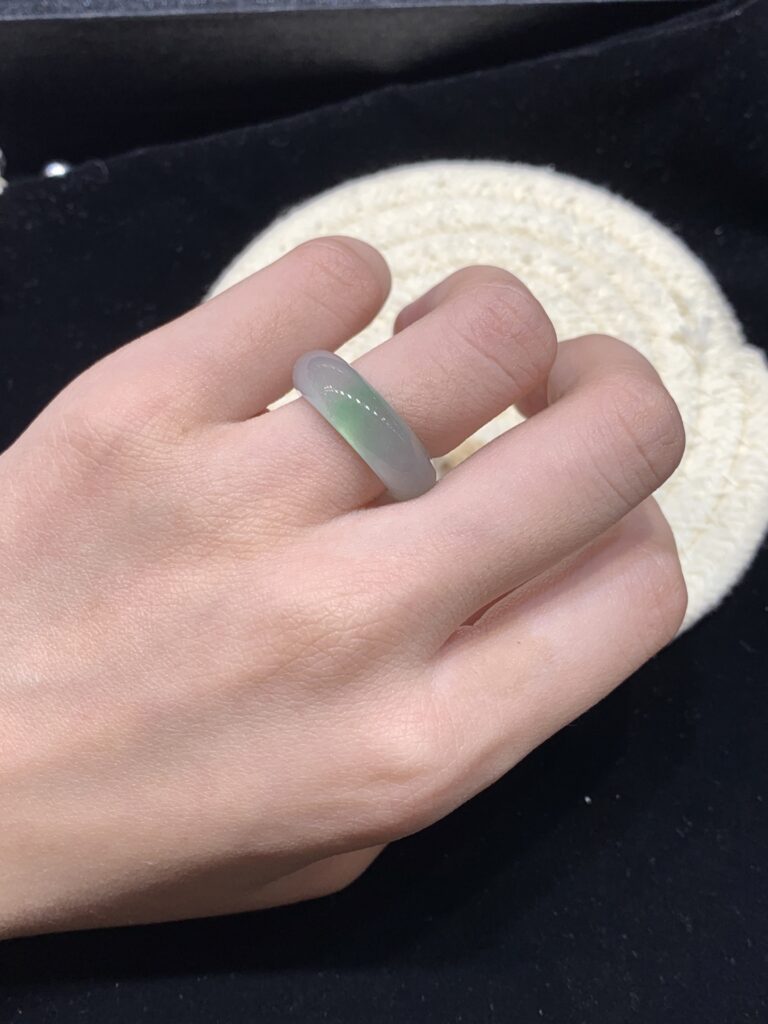
6. Symbolism and Spiritual Meaning Behind Jade Rings
Beyond their beauty, jade rings are deeply symbolic and hold powerful spiritual meaning in many cultures. Whether worn as a fashion accessory or as a personal talisman, the jade ring resonates with centuries of belief in its metaphysical properties.
a. A Stone of Harmony and Protection
In Chinese culture, jade has long been revered as a protector of both body and soul. A jade ring is often worn to absorb negative energy, guard against misfortune, and restore balance in one’s life. It is said that jade can “take the hit” for its wearer—cracking or dulling to ward off spiritual harm.
Jade is also associated with calmness, emotional healing, and clarity of thought, making it ideal for those who seek mindfulness and inner peace.
b. Symbol of Virtue and Status
Confucian philosophy links jade with the five cardinal virtues: benevolence, righteousness, wisdom, integrity, and courage. Wearing a jade ring is a subtle way to express moral character and personal refinement. Historically, such rings were worn by scholars, nobles, and emperors as emblems of integrity and spiritual depth.
In modern times, jade rings still convey a quiet sense of dignity and sophistication, especially when chosen thoughtfully.
c. Love, Luck, and Longevity
Jade is also a stone of love and prosperity. In many Asian cultures, couples exchange jade rings as tokens of enduring love and harmony. They’re often given as wedding or anniversary gifts to bless the union with happiness, fertility, and fidelity.
Wearing a jade ring on the left hand is traditionally thought to enhance personal growth and bring in good fortune, while the right hand emphasizes protection and stability.
d. Spiritual Practices and Energy Work
In holistic and energy healing traditions, jade is believed to resonate with the heart chakra, fostering compassion and emotional openness. Practitioners of meditation, Tai Chi, and Reiki often wear jade rings to center their energy and heighten spiritual awareness.
Because jade is considered a “living stone,” many believe it forms a bond with its wearer over time—changing in luster and energy as it adapts to its owner’s aura.
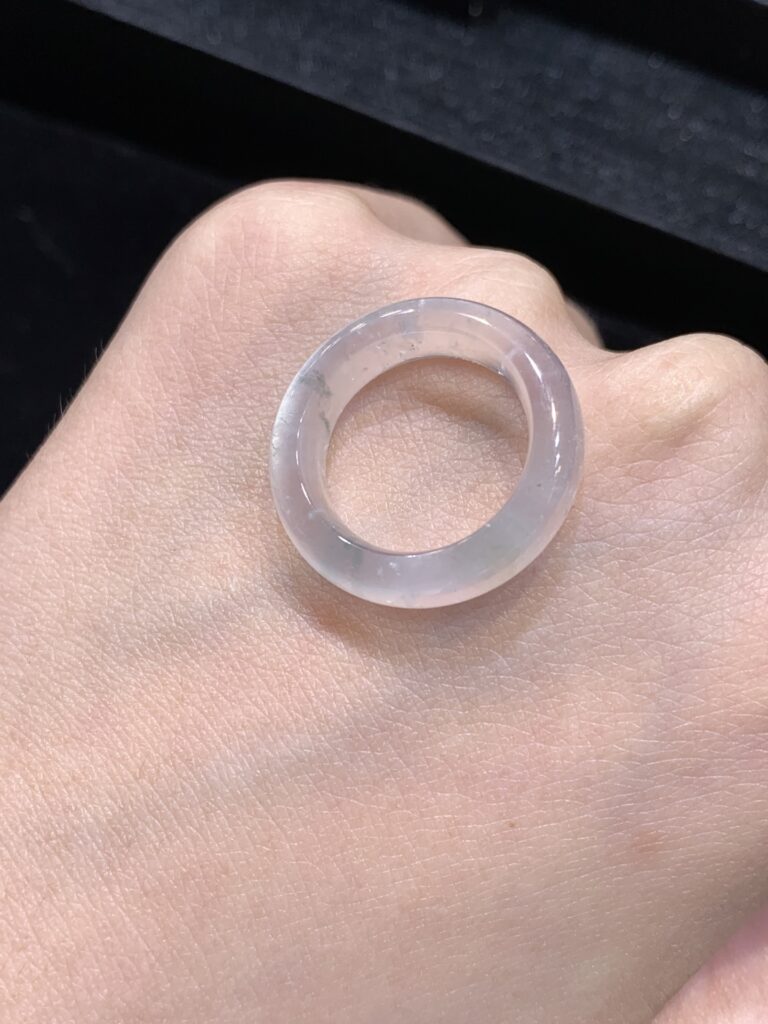
7. How to Wear and Style Your Jade Ring
A jade ring is not only a piece of jewelry—it’s a personal expression of tradition, energy, and elegance. Whether you wear it daily or on special occasions, styling your jade ring with intention enhances both its aesthetic appeal and spiritual impact.
a. Which Finger Should You Wear a Jade Ring On?
Traditionally in Chinese culture, a jade ring is worn on the left hand to attract positive energy and good fortune, as the left side of the body is considered more “receptive.”
- Left index finger: Promotes self-confidence and career success
- Left middle finger: Encourages emotional stability and harmony
- Left ring finger: Symbolizes love, loyalty, and commitment
- Right hand: Worn for protection, strength, and grounding
Ultimately, there are no strict rules—wear your jade ring where it feels most aligned with your intention and style.
b. Pairing with Other Jewelry
The natural hues of jade—whether green, lavender, or white—are incredibly versatile. A jade ring pairs beautifully with gold, rose gold, or silver bands for a balanced modern look.
- For a minimalist style, wear a jade solitaire on its own.
- For a bolder statement, stack it with textured metal rings or gemstone bands.
- For harmony, coordinate with jade bangles, earrings, or pendants in matching tones.
Avoid pairing jade with overly flashy or synthetic-looking pieces—it shines best in natural, elegant settings.
c. Styling by Occasion
- Daily Wear: Choose a simple jade ring with a low-profile setting for comfort and durability.
- Business/Professional: Opt for jade in soft tones like icy white or light green set in gold or platinum, conveying calm authority and elegance.
- Formal Events: A high-translucency jadeite ring with diamonds or a custom design adds sophistication and cultural depth to any look.
A well-styled jade ring not only enhances your outfit but also sends a subtle message of grace, mindfulness, and personal refinement.
8. Caring for Your Jade Ring: Cleaning and Storage Tips
To preserve the beauty and energy of your jade ring, proper care is essential. Although jade is a relatively tough stone, it can be damaged by harsh chemicals, extreme temperatures, or improper storage.
a. How to Clean a Jade Ring
- Use lukewarm water and mild soap: Gently clean your jade ring with a soft cloth or a very soft toothbrush. Avoid hot water or acidic cleaners, as they may affect the stone’s polish or setting.
- Dry thoroughly: Pat the ring dry with a clean, soft towel. Make sure the ring is completely dry before storing it.
- Avoid ultrasonic cleaners: These machines can crack or chip natural jade due to vibrations, especially in older or untreated pieces.
Regular gentle cleaning keeps your jade ring radiant without compromising its integrity.
b. What to Avoid
- No bleach, alcohol, or ammonia: These chemicals can damage jade’s natural structure and remove its signature luster.
- Avoid impact: Though jade is durable, it’s not indestructible. Dropping or knocking your ring on hard surfaces can cause fractures.
- Do not expose to extreme heat: High temperatures can damage the internal composition of jade or cause discoloration.
c. Proper Storage Tips
Store your jade ring in a soft pouch or a jewelry box lined with fabric. If possible, keep it separate from harder gemstones like diamonds or sapphires that could scratch the jade surface.
For long-term care:
- Store in a cool, dry place away from direct sunlight
- Avoid placing heavy objects on top of your jade jewelry
- Rotate wear occasionally to maintain balance in the stone’s energy
d. Energizing Your Jade Ring
Because jade is considered a “living stone,” many believe it absorbs and reflects the wearer’s energy. To recharge your jade ring, some recommend:
- Placing it in moonlight overnight
- Resting it on a bed of natural crystals
- Cleansing it with intention during meditation
Taking the time to care for your jade ring not only protects its beauty—it deepens the spiritual bond between you and your most meaningful piece of jewelry.
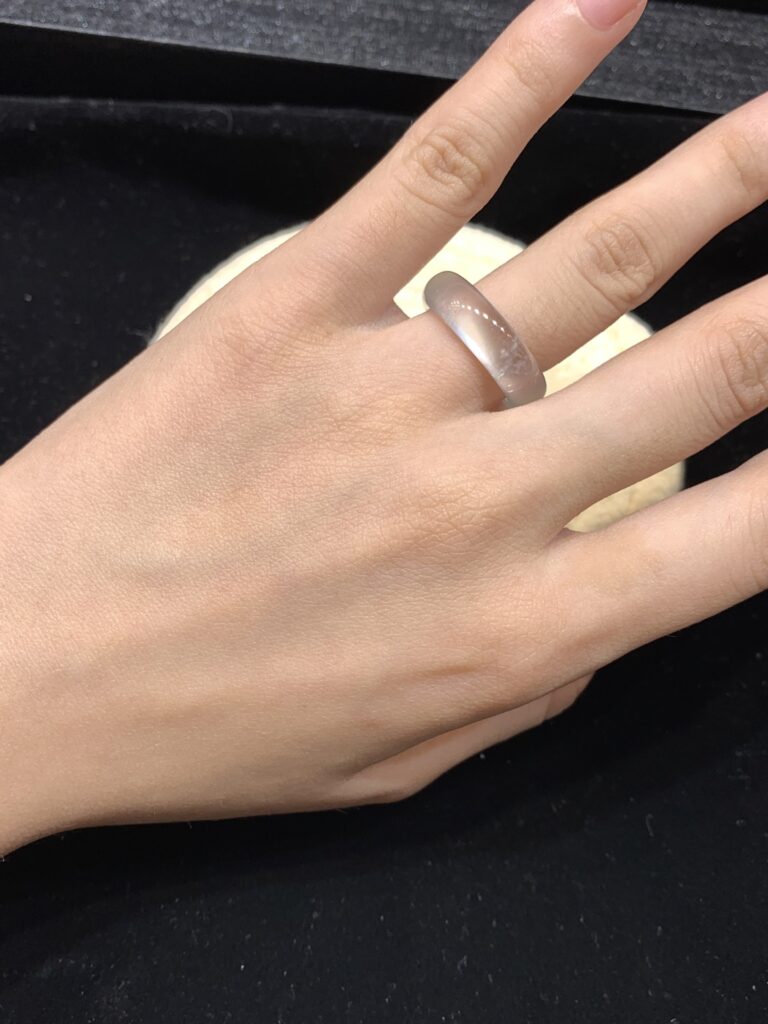
9. Fake vs. Real: How to Identify Authentic Jade
With the increasing popularity of jade jewelry, imitations have become widespread. Knowing how to identify real jade is crucial for collectors and first-time buyers alike.
a. Recognizing Common Imitations
Counterfeit jade often takes the form of glass, dyed quartz, or polymer-infused stones. While they may appear beautiful, these substitutes lack the weight, texture, and natural glow of genuine jadeite or nephrite. In particular, “B jade” refers to stones that have been bleached and filled with resin, while “C jade” has been artificially dyed—both significantly lower in value and durability.
b. Tips for Authenticity
- Touch: Real jade feels cool and dense in the hand.
- Sound: Tap it lightly—authentic jade gives off a crisp, musical tone.
- Look closely: Under magnification, true jade shows fibrous, granular patterns rather than smooth surfaces.
- Certification: Always request documentation from a trusted gemological lab.
c. Spotting Red Flags
Be wary of terms like “man-made jade,” “enhanced jade,” or vague phrases like “jade-style.” These often indicate synthetic or treated materials. If a piece is priced far below market value, it’s worth questioning its legitimacy.
10. Where to Find Reliable Sources for Jade Jewelry
Finding high-quality jade means more than choosing the right color—it means buying from someone you trust.
a. Trusted Jewelers and Galleries
Local gemstone specialists or high-end jewelry stores often provide well-documented jade pieces. Look for sellers who offer:
- Transparent sourcing information
- Laboratory reports
- Clear return policies
- A solid reputation built over time
In areas like Hong Kong, Taipei, or Yangon, jade experts operate with decades of experience and offer both modern and traditional designs.
b. Online Platforms: Proceed with Caution
Online shopping opens access to rare styles, but also carries risks. Stick with platforms that vet their sellers or have strong customer feedback systems. Ask for multiple photos, videos, and verification of origin or treatment before purchasing.
c. Auctions and Private Sales
Estate auctions can reveal beautiful vintage jade items. While prices vary, these often come with provenance and quality assurance, making them ideal for collectors seeking unique finds.
11. Conclusion: A Legacy of Meaning and Beauty
More than just a fashion statement, jade jewelry carries centuries of cultural heritage and personal symbolism. Whether carved into delicate bands or bold statement pieces, it reflects balance, purity, and resilience.
Choosing a piece that speaks to you—through color, craftsmanship, or spiritual significance—can be the beginning of a lifelong connection. With care and intention, a single jade ring can become an heirloom, a talisman, and a deeply personal expression of identity.